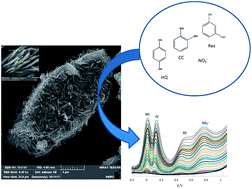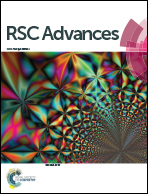Poly(quercetin)-bismuth nanowires as a new modifier for simultaneous voltammetric determination of dihydroxybenzene isomers and nitrite
Abstract
Dihydroxybenzene isomers and nitrite, NO2−, are present in the environment as highly toxic compounds and cause human cancer. In this study, for the first time poly(quercetin) (PQ) was synthesized from the reaction between quercetin (Q) and hydroquinone (HQ) as a linker. Bismuth nanowires (BNWs) were synthesized using a solvothermal technique and then the BNWs and PQ were used for preparation of a novel modified graphite paste electrode (GPE/PQ–BNWs) for simultaneous determination of dihydroxybenzene isomers; HQ, catechol (CC), resorcinol (RS) in the presence of NO2−. The product was characterized using X-ray diffraction, field emission scanning electron microscopy and Fourier transform infrared spectroscopy. The electrochemical response characteristics of the modified GPE toward mix HQ, CC, RS and NO2− were investigated by cyclic voltammetry, differential pulse voltammetry and electrochemical impedance spectroscopy. Under the optimum conditions, detection limits of 0.12, 0.2, 0.82 and 4.5 μM were obtained for HQ, CC, RS and NO2−, respectively. Moreover, the GPE/PQ–BNWs were applied to determine HQ, CC, RS and NO2− in water samples with satisfactory results.



 Please wait while we load your content...
Please wait while we load your content...